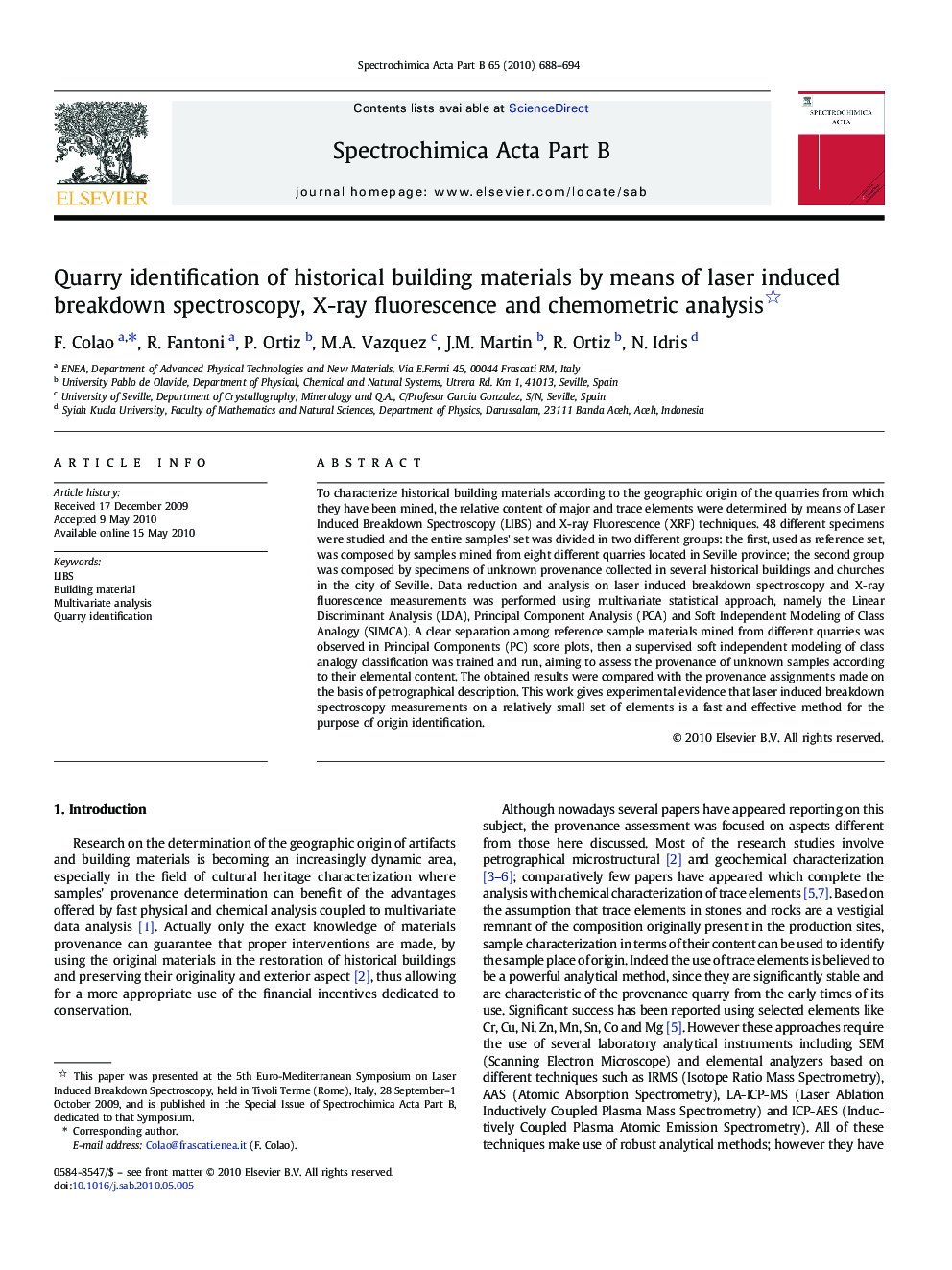| Article ID | Journal | Published Year | Pages | File Type |
|---|---|---|---|---|
| 1240311 | Spectrochimica Acta Part B: Atomic Spectroscopy | 2010 | 7 Pages |
To characterize historical building materials according to the geographic origin of the quarries from which they have been mined, the relative content of major and trace elements were determined by means of Laser Induced Breakdown Spectroscopy (LIBS) and X-ray Fluorescence (XRF) techniques. 48 different specimens were studied and the entire samples' set was divided in two different groups: the first, used as reference set, was composed by samples mined from eight different quarries located in Seville province; the second group was composed by specimens of unknown provenance collected in several historical buildings and churches in the city of Seville. Data reduction and analysis on laser induced breakdown spectroscopy and X-ray fluorescence measurements was performed using multivariate statistical approach, namely the Linear Discriminant Analysis (LDA), Principal Component Analysis (PCA) and Soft Independent Modeling of Class Analogy (SIMCA). A clear separation among reference sample materials mined from different quarries was observed in Principal Components (PC) score plots, then a supervised soft independent modeling of class analogy classification was trained and run, aiming to assess the provenance of unknown samples according to their elemental content. The obtained results were compared with the provenance assignments made on the basis of petrographical description. This work gives experimental evidence that laser induced breakdown spectroscopy measurements on a relatively small set of elements is a fast and effective method for the purpose of origin identification.
